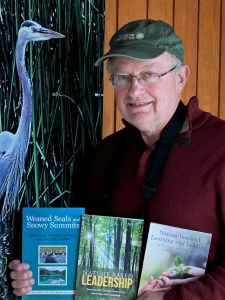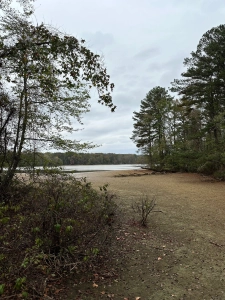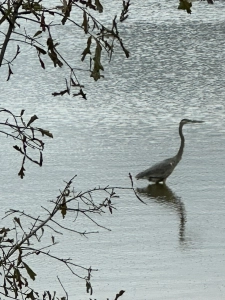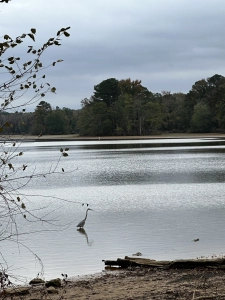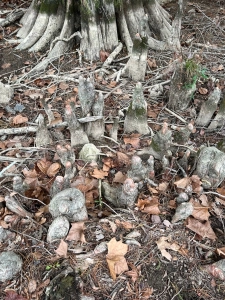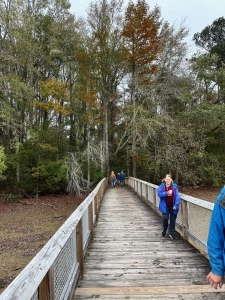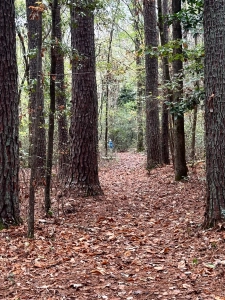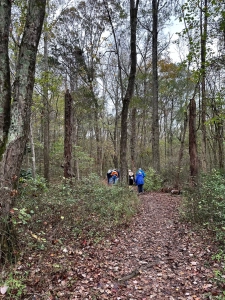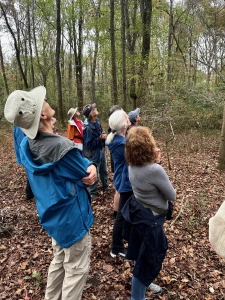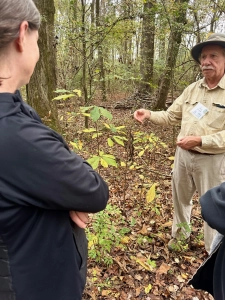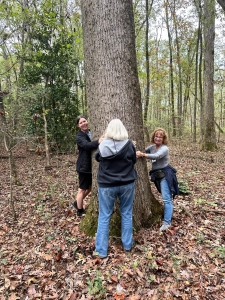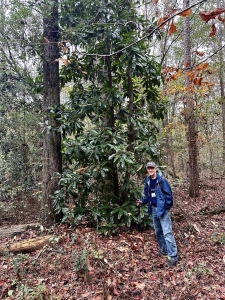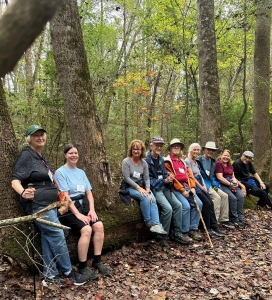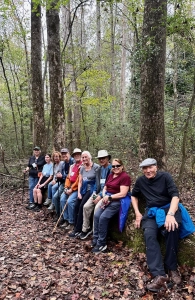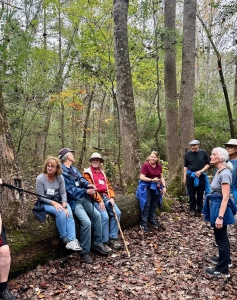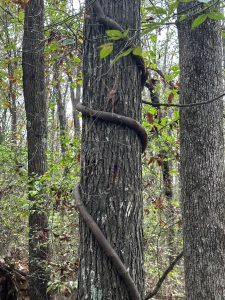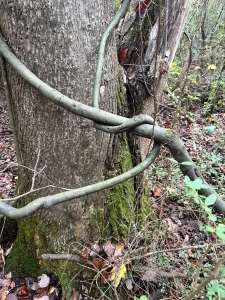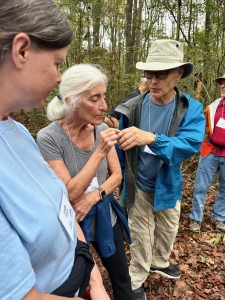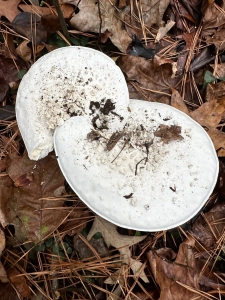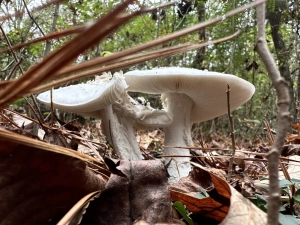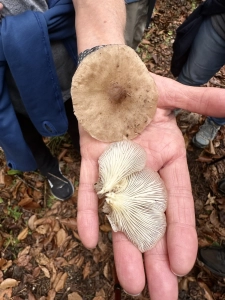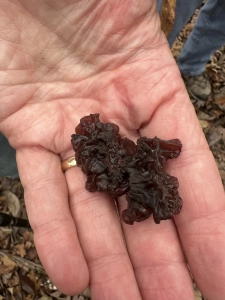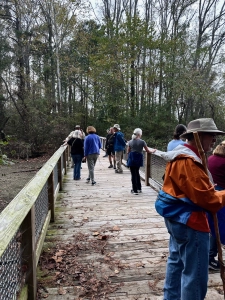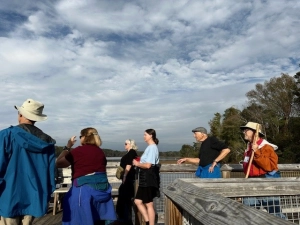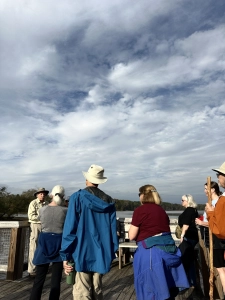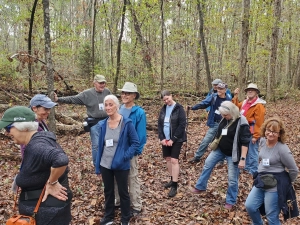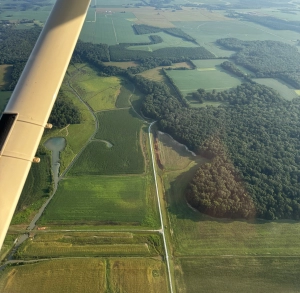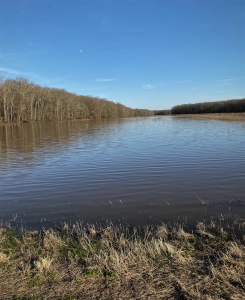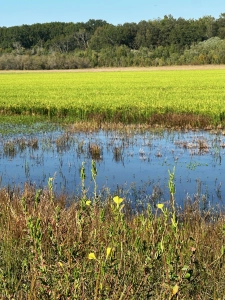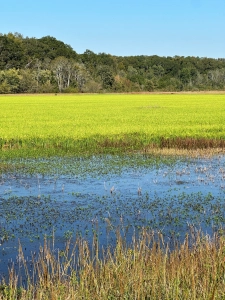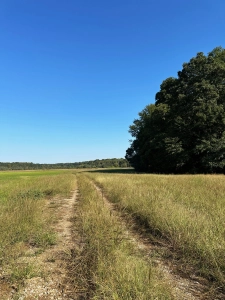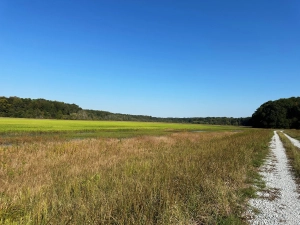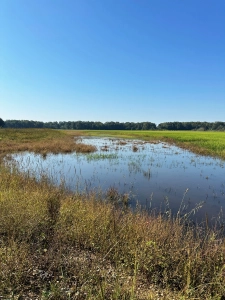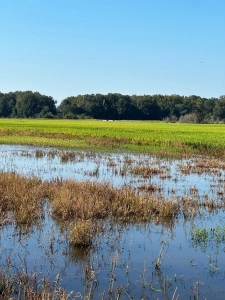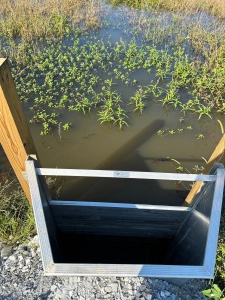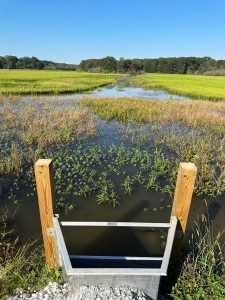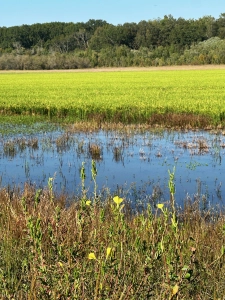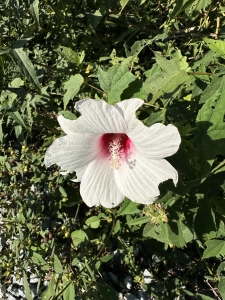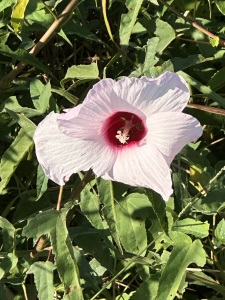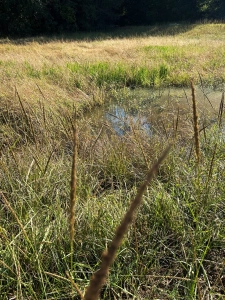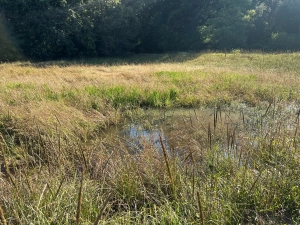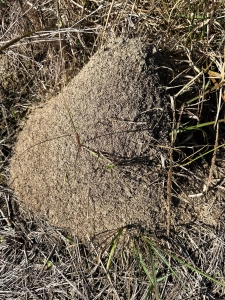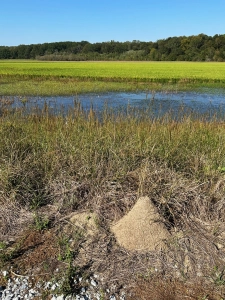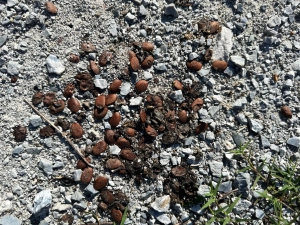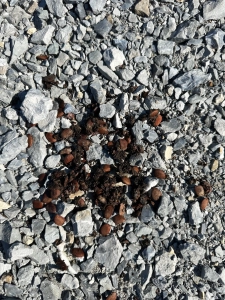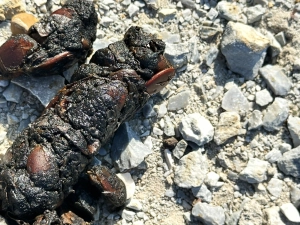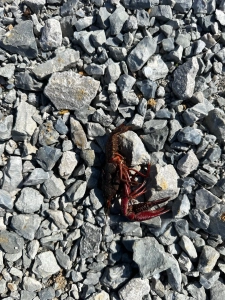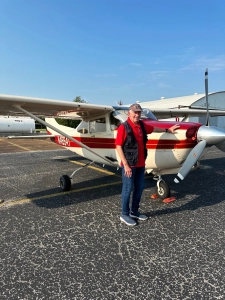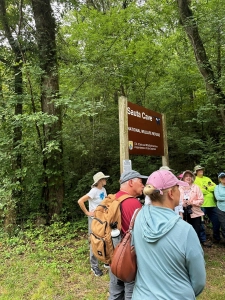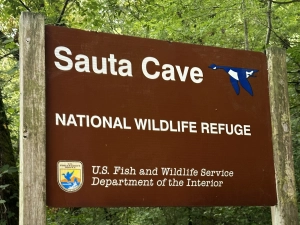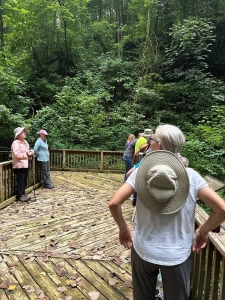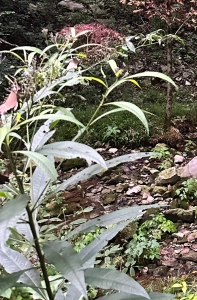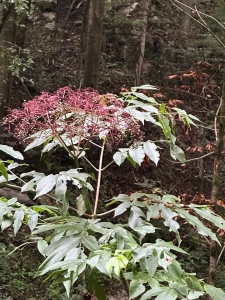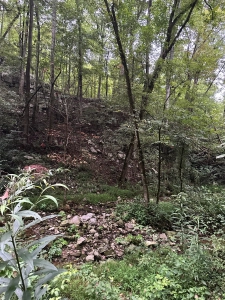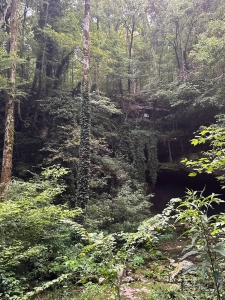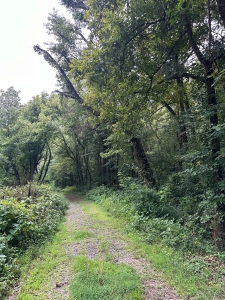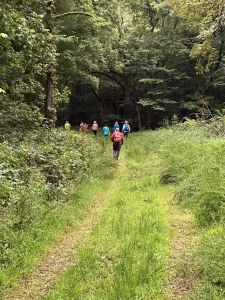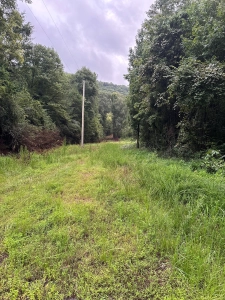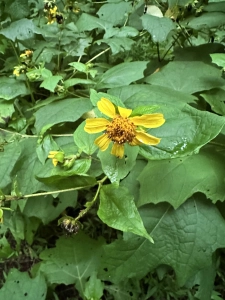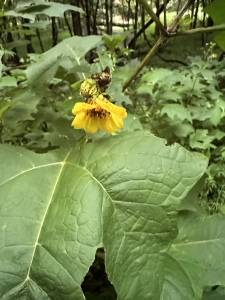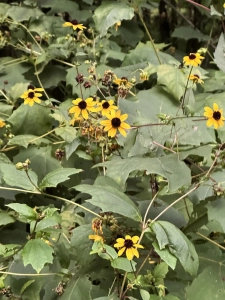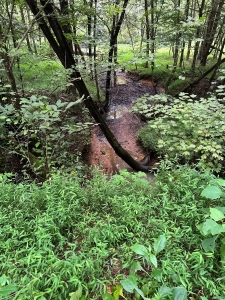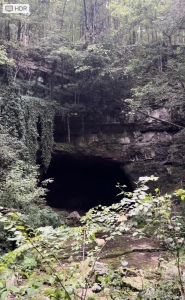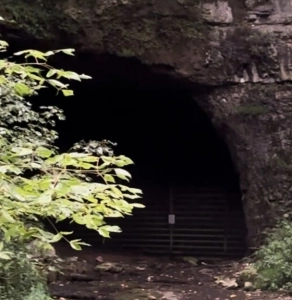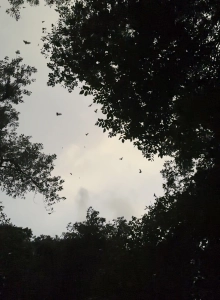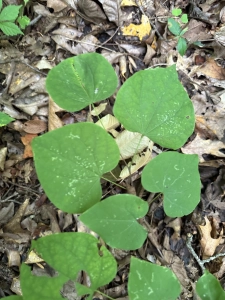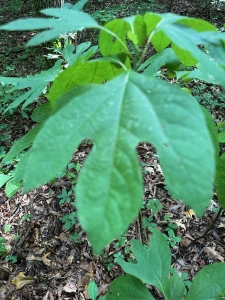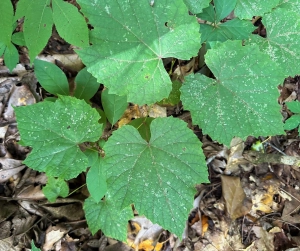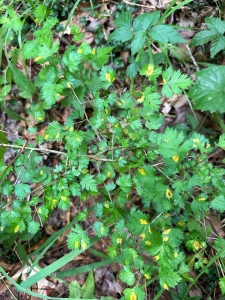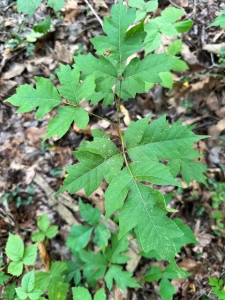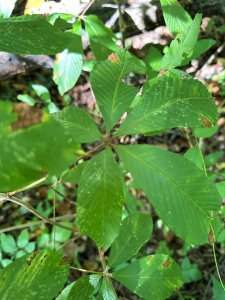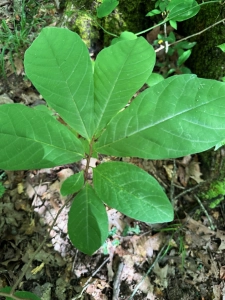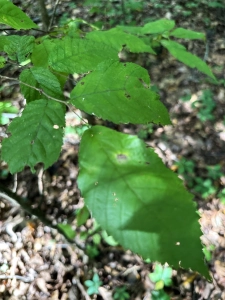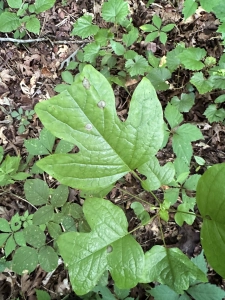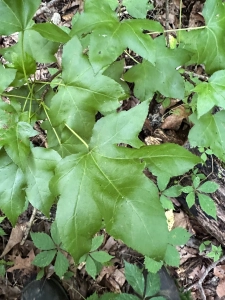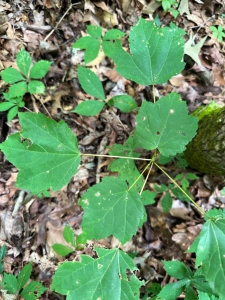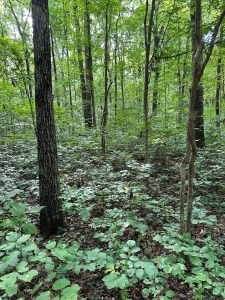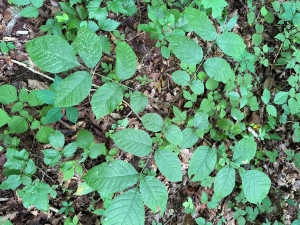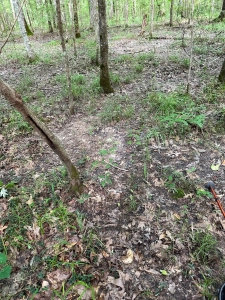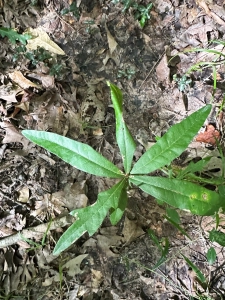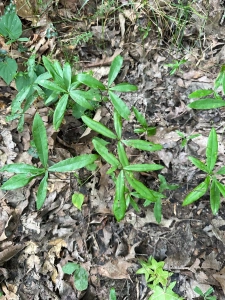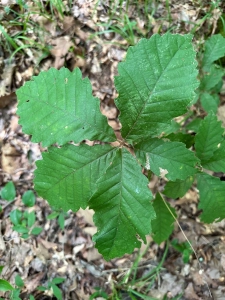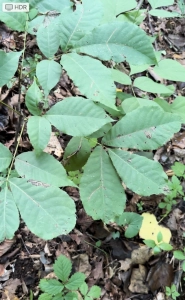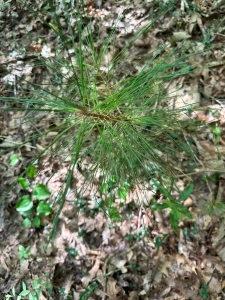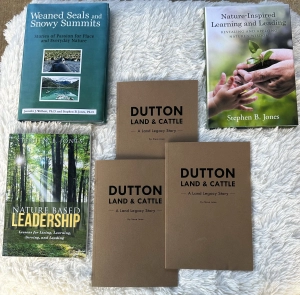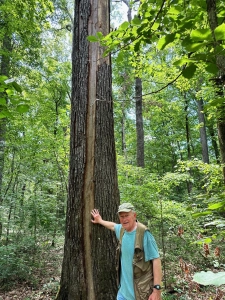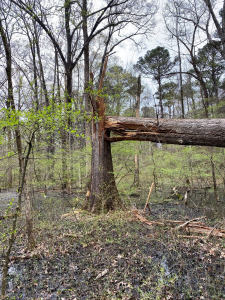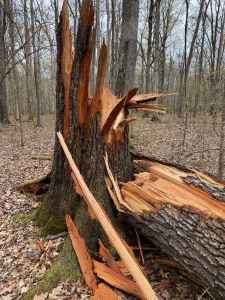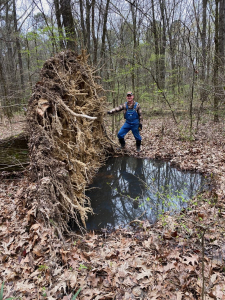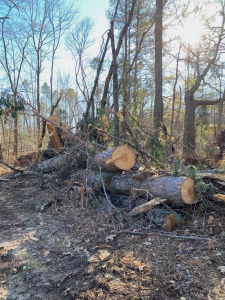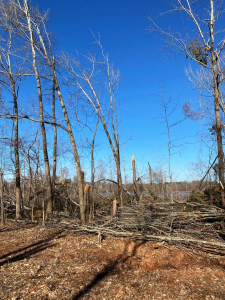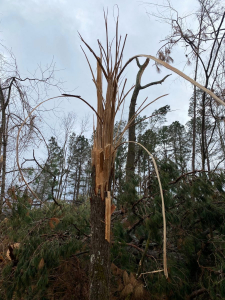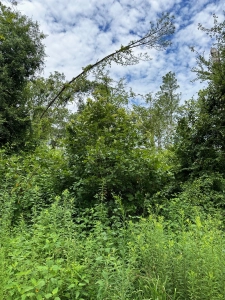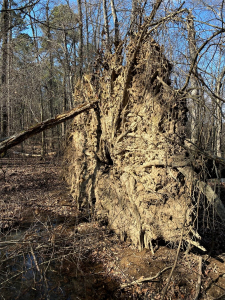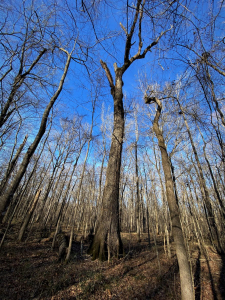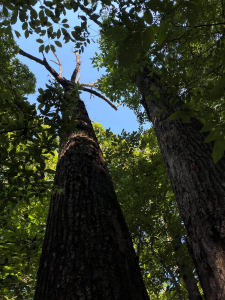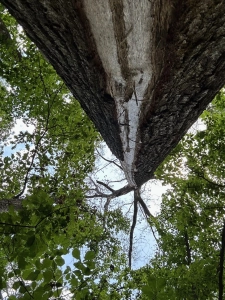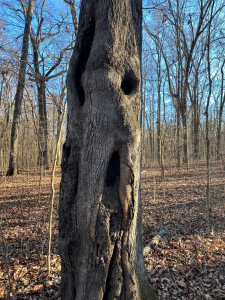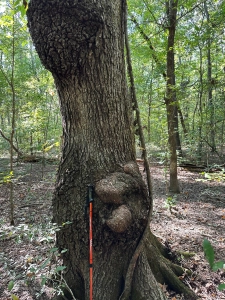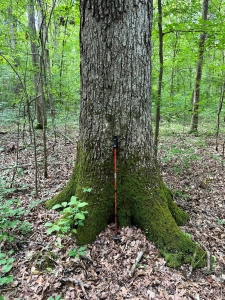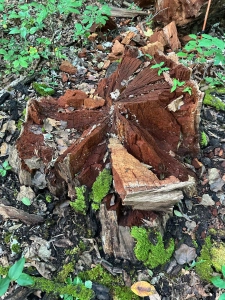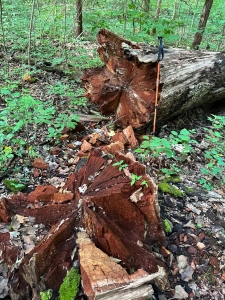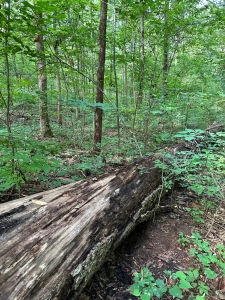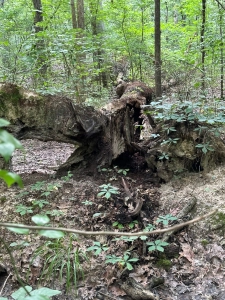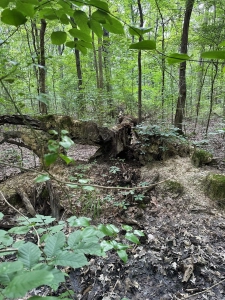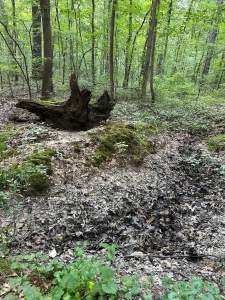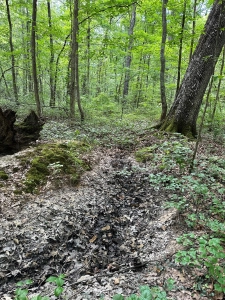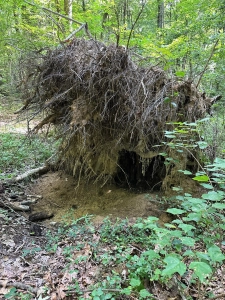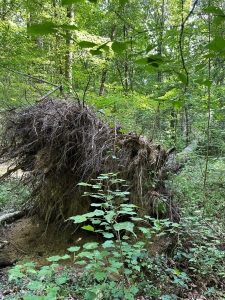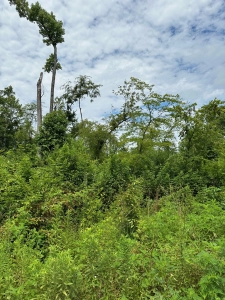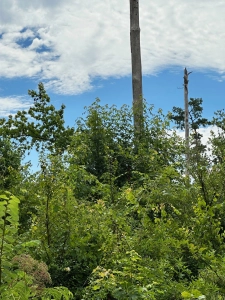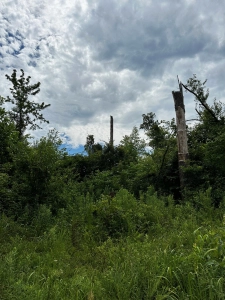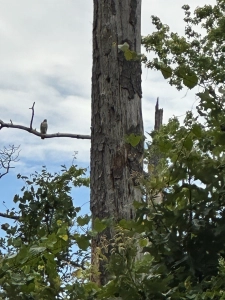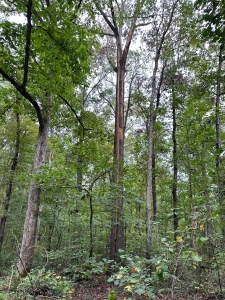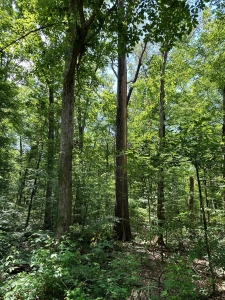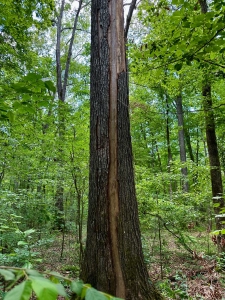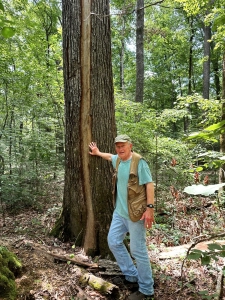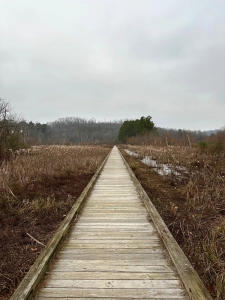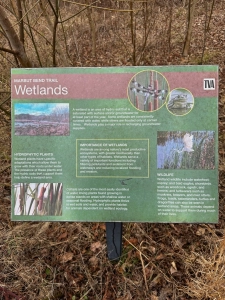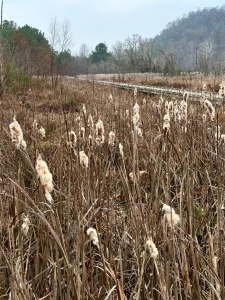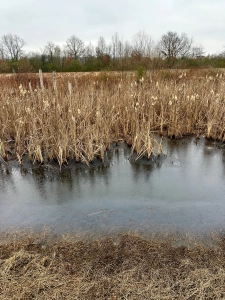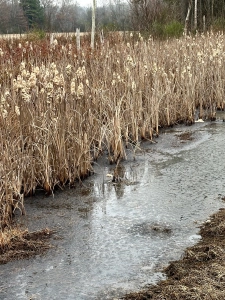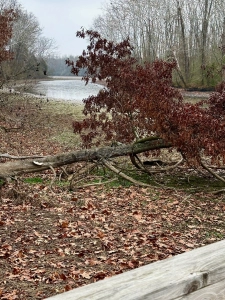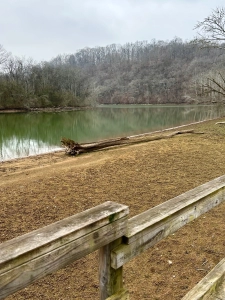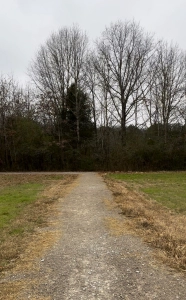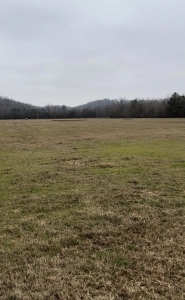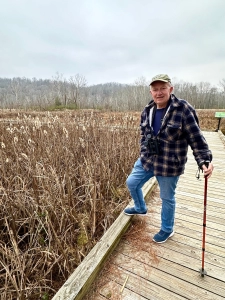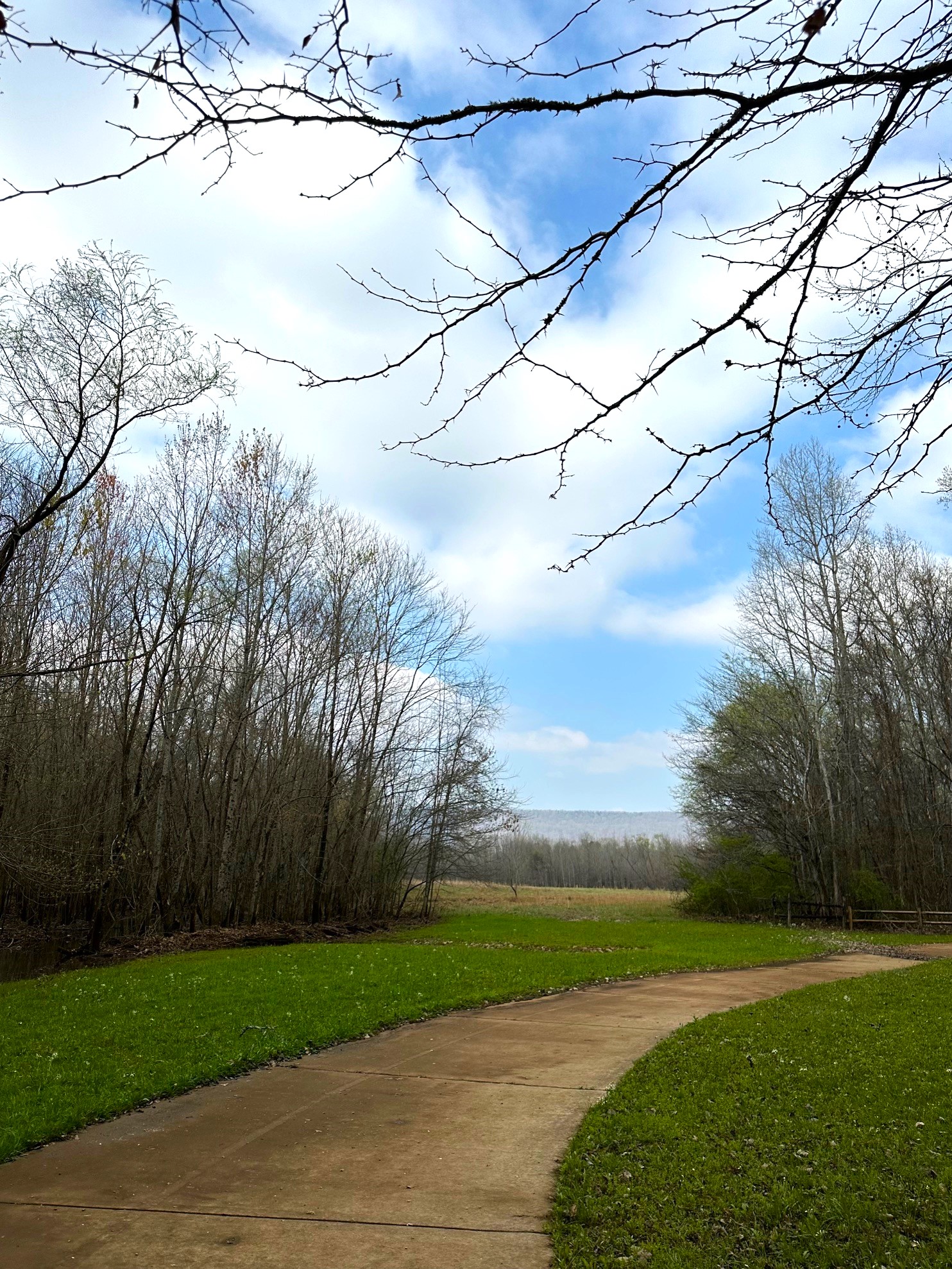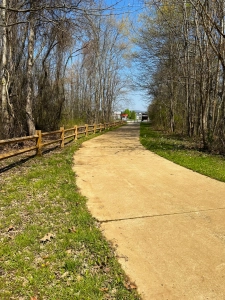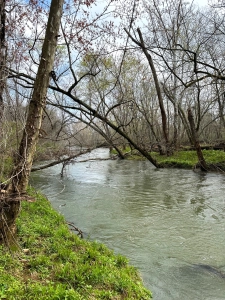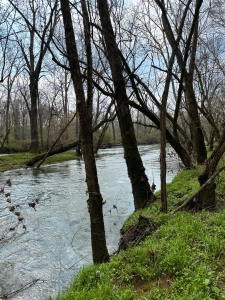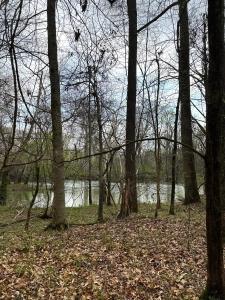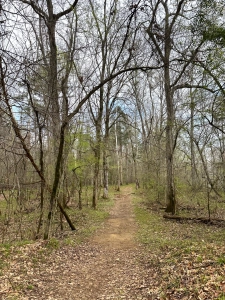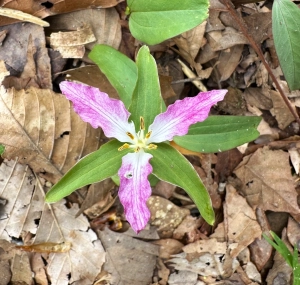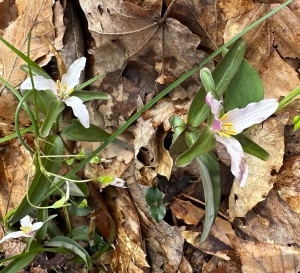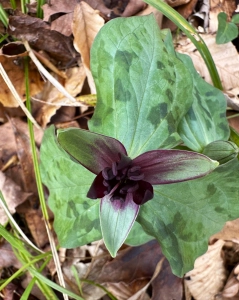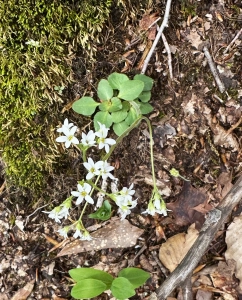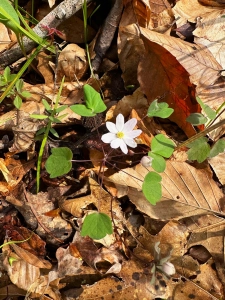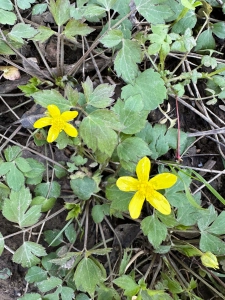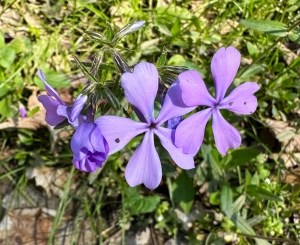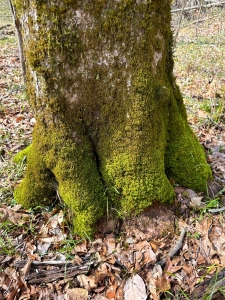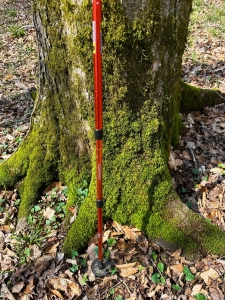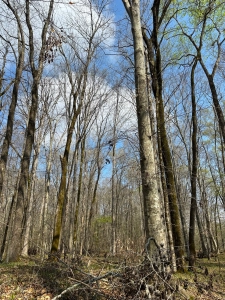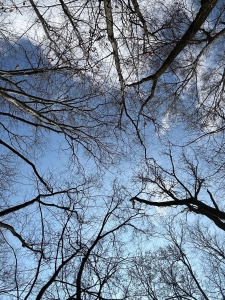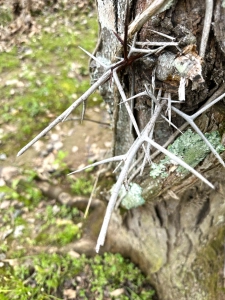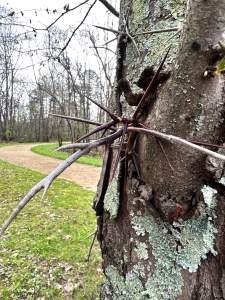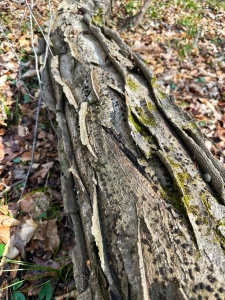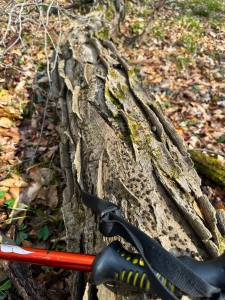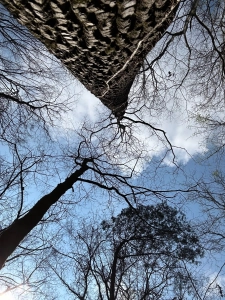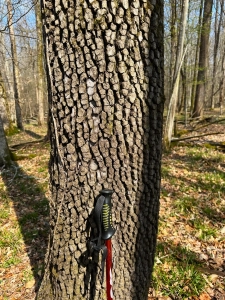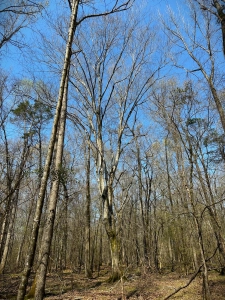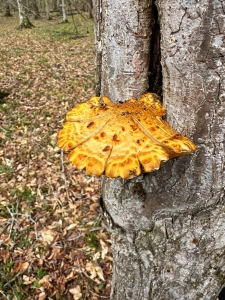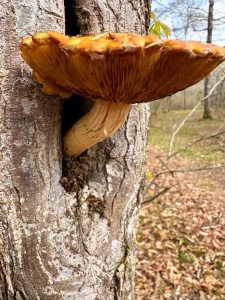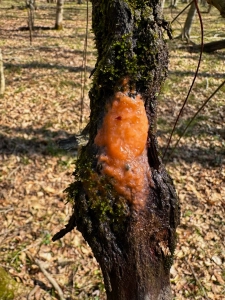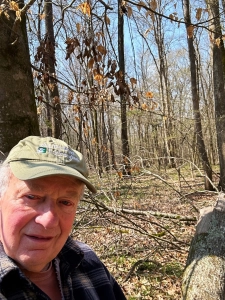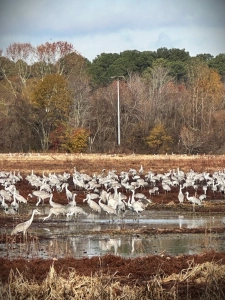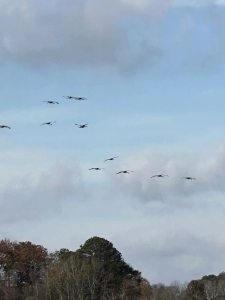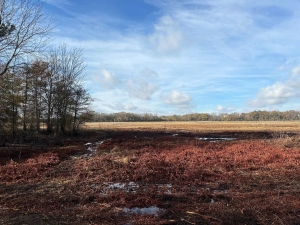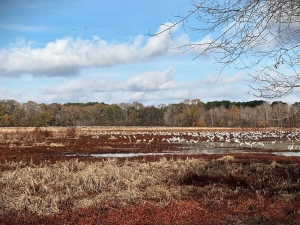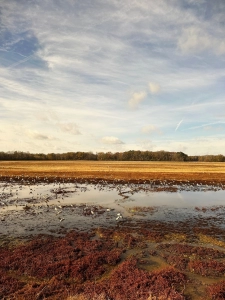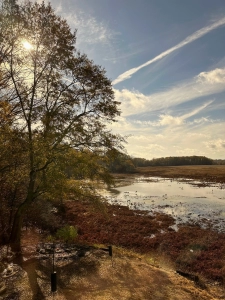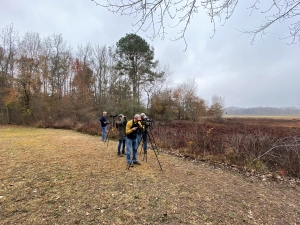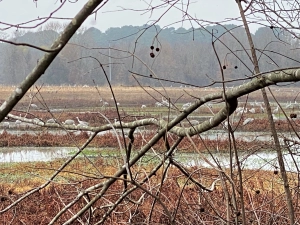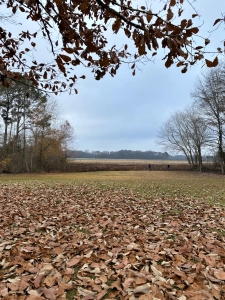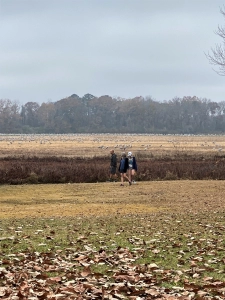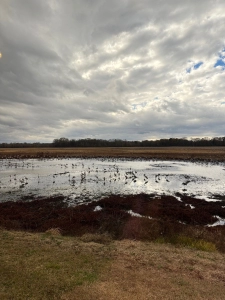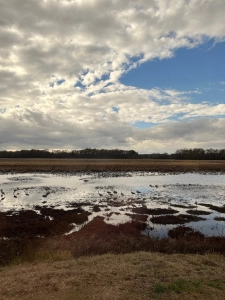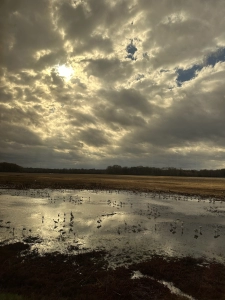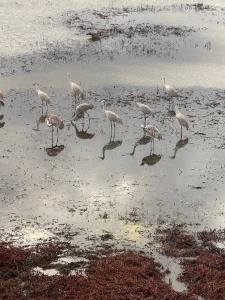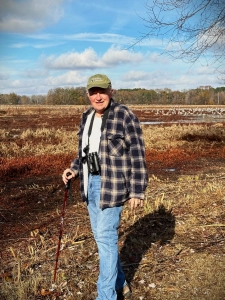Blackwell Swamp and Rockhouse Bottom in Early October on the Wheeler National Wildlife Refuge (Part Two)
On October 6, 2024, a little longer than six weeks since my total right knee replacement surgery, I ventured to Wheeler National Wildlife Refuge to gently explore Buckeye Impoundment, Blackwell Swamp, and Rockhouse Bottom by automobile and dirt road strolling. Not yet ready for woodland trail wandering, I welcomed the fresh air, seasonal transition signs, and diverse habitats of meadow, swamp, and Tennessee River.
Because the three ecological units are too much to stuff into a single photo essay, Blackwell Swamp and Rockhouse Bottom will serve as Part Two of my October 6 exploration.
Blackwell Swamp
A friend toured me in August 20, 2023 in his Cessna over the Wheeler National Wildlife Refuge. Here’s Blackwell Swamp from its south end looking into the hazy north. Until drafting this narrative I had not noticed that the swamp looks a lot like Florida’s penninsula.
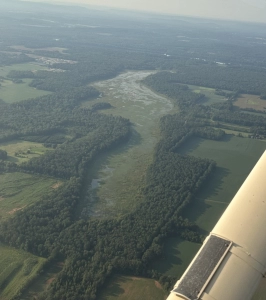
A rough canoe launch on the southwest corner offers a viewpoint for the swamp’s southern extent. I can’t recall what manner of life I saw on this visit, but seldom have my viewings come up empty. Prior observations have included: bald eagle, osprey, barred owl, water snakes, turtles, lots of ducks, Canada geese, great blue herons, great egrets, green herons, and many songbirds.
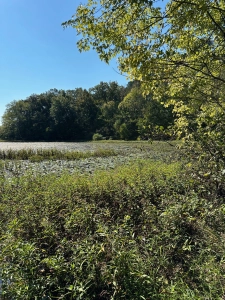
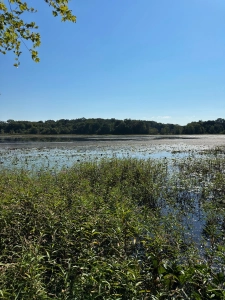
Although early October, the swamp ecosystem was transitioning from summer to autumn. The entire period from September through April gradually shifts from early fall to spring. Winter is hardly a confirmed season of its own! After many years living in Upstate New York, New Hampshire, Ohio, Pennsylvania, and Alaska, my winter frame of reference includes persistent cold periods, occasional snow, and deep dormancy. Early October in Fairbanks, AK begins its earnest winter; by mid-October the daily high seldom, then rarely, reaches freezing until after mid-March. Our winters in southeastern Virginia, Savannah, Georgia, and Auburn and Prattville, Alabama likewise delivered only a few days of real winter.
I recorded this 52-second video mid-morning on October 6, on a day that merely hinted at autumn temperatures, yet the summer sharpness is gone.
The Corps of Engineers, as it does across much of the refuge, maintains waterfowl habitat in Blackwell across all seasons. Otherwise, the swamp would be dry during this current period of drought. I have no expertise in wetland and pond ecology. I am a keen enough observer to notice that the swamp is increasingly vegetation bound. Is the condition terminal, eventually clogging, reducing open water, and shifting toward a marshland ecotype? Will the COE implement selective dredging to maintain open water? I see mystery and intrigue. I want to learn more.
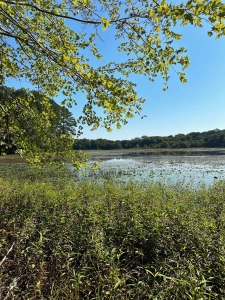
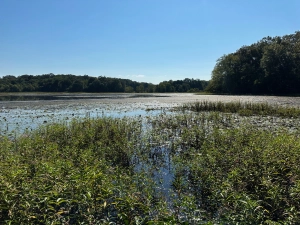
Winter memories visiting bogs, fens, muskeg, beaver ponds, and wetland forests remain deeply embedded in my psyche. I loved the crunch, bitter cold, deep snows, and far away promise of spring. Harsh winters in those higher latitudes deterred travel, kept me near the fireplace, and disuaded me from venturing into wildness. Here in northern Alabama, our wildland winters beckon me, embrace me, and council me to offer reflections, make observations, snap photographs, and record videos, sharing the experience with other Nature enthusiasts.
Rockhouse Bottom
This view from Auguct 20, 2023 looks downstream on the Tennessee River toward Wheeler Dam. The gravel road meeting the river is the one dropping from Blackwell Swamp.
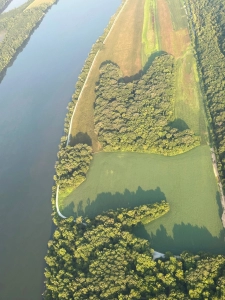
I stood at the river’s edge just 10 days after Helene’s ravaging floods devastated the Asheville, NC area. On October 1, 2024, I co-taught a section of a course on the Tennessee Valley, observing that the Tennessee River Basin encompassed the vast bulk of the area receiving 15-30-inches from Helene and its associated frontal deluge. One person “corrected” me, wrongly observing that Asheville was on the other side of the divide. Allow me a moment to state a truth that has stayed with me across my career in science…and beyond: A wise man knows the limit of his knowledge; a fool knows not his bounds. I know what I know. I employ these special zones of knowledge-certainty as my BS filters. If someone speaks in absolute terms (and is absolutely wrong) in an arena of my particular expertise, I judge all that they say with skepticism. Skepticism with evident repetition by the individual can develop to earn a designation as fool. Excuse my personal-irritant sidebar.
The river carried a heavy sediment load, the tremendous floodwaters already working their way to Huntsville, the peak modulated by the series of dams above us. I wonder what affect an equivalent storm would have had here 250 years ago.
I recorded this 60-second video of the Helene-laden Tennessee River:
This gentle stretch (upstream left) suggests none of the fury that altered landscapes, took lives, wrecked tomorrow just a few hundred miles upstream. However, even a fool can comprehend Nature’s supreme power. Yet, such events are not new. Judy and I celebrated our 50th wedding anniversary two summer’s ago in Asheville, NC. I recall gawking at the high water marks of an epic July 1916 flood resulting from remnants of a tropical storm. Perhaps we will someday learn that Nature seldom (if ever) loses, just as time and gravity are undefeated.
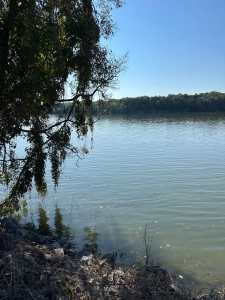
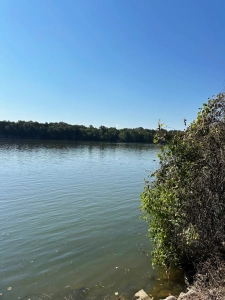
The same flooding that has rushed down this valley since the first raindrops fell on the rising Appalachians has blessed and replenished fields and floodplains like this one at Rockhouse Bottom bordering the river.
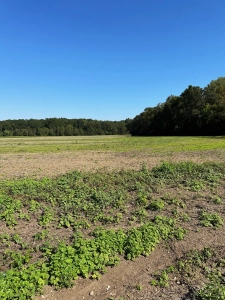
I enjoyed the dose of Nature’s Elixir delivered by my early October trip to Buckeye Impoundment, Blackwell Swamp, and Rockhouse Bottom!
Thoughts and Reflections
I offer these observations:
- A wise man knows the limit of his knowledge; a fool knows not his bounds. (Steve Jones)
-
When we try to pick out anything by itself, we find it hitched to everything else in the Universe. (John Muir)
- Oh, the magic, inspiration, awe, beauty, and wonder in having a 35,000-acre National Wildlife Refuge so close to home! (SJ, again)
Inhale and absorb Nature’s elixir. May Nature Inspire, Inform, and Reward you!
Note: Unless otherwise noted, all blog post images are created & photographed by Stephen B. Jones. Please circulate images with photo credit: “©2025 Steve Jones, Great Blue Heron LLC. All Rights Reserved.”
Another Note: If you came to this post via a Facebook posting or by another route, please sign up now (no cost… no obligation) to receive my Blog Post email alerts: http://eepurl.com/cKLJdL
And Third: I am available for Nature-Inspired Speaking, Writing, and Consulting — contact me at steve.jones.0524@gmail.com
A reminder of my Personal and Professional Purpose, Passion, and Cause
If only more of us viewed our precious environment through the filters I employ. If only my mission and vision could be multiplied by untold orders of magnitude:
Mission: Employ writing and speaking to educate, inspire, and enable readers and listeners to understand, appreciate, and enjoy Nature… and accept and practice Earth Stewardship.
Vision:
- People of all ages will pay greater attention to and engage more regularly with Nature… and will accept and practice informed and responsible Earth Stewardship.
- They will see their relationship to our natural world with new eyes… and understand their Earth home more clearly.
Tagline/Motto: Steve (Great Blue Heron) encourages and seeks a better tomorrow through Nature-Inspired Living!
Steve’s Four Books
I wrote my books Nature Based Leadership (2016), Nature-Inspired Learning and Leading (2017), Weaned Seals and Snowy Summits: Stories of Passion for Place and Everyday Nature (2019; co-authored with Dr. Jennifer Wilhoit), and Dutton Land & Cattle: A Land Legacy Story (2023) to encourage all citizens to recognize and appreciate that every lesson for living, learning, serving, and leading is either written indelibly in or is powerfully inspired by Nature. All four of my books present compilations of personal experiences expressing my deep passion for Nature. All four books offer observations and reflections on my relationship with the natural world… and the broader implications for society. Order any from your local indie bookstore, or find them on IndieBound or other online sources such as Amazon and LifeRich.
I began writing books and Posts for several reasons:
- I love hiking and exploring Nature
- I see images I want to (and do) capture with my trusty iPhone camera
- I enjoy explaining those images — an educator at heart
- I don’t play golf!
- I do love writing — it’s the hobby I never needed when my career consumed me
- Judy suggested my writing is in large measure my legacy to our two kids, our five grandkids, and all the unborn generations beyond
- And finally, perhaps my books and Blogs could reach beyond family and touch a few other lives… sow some seeds for the future
